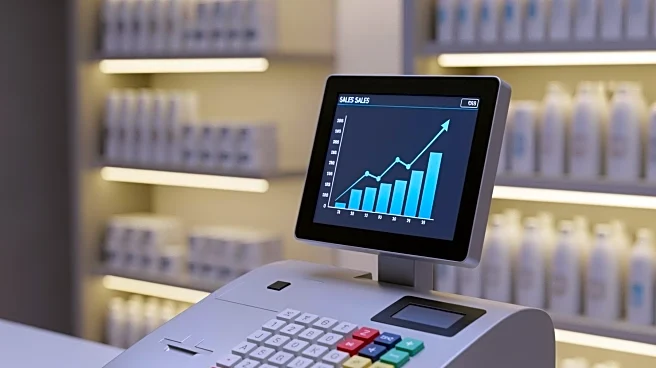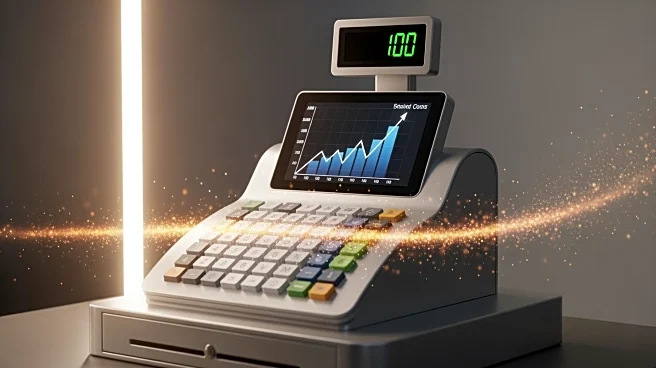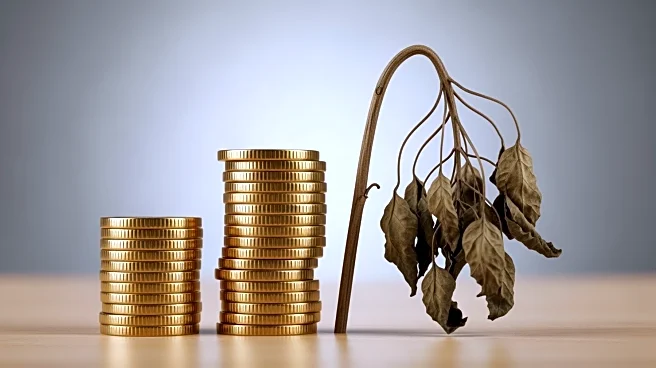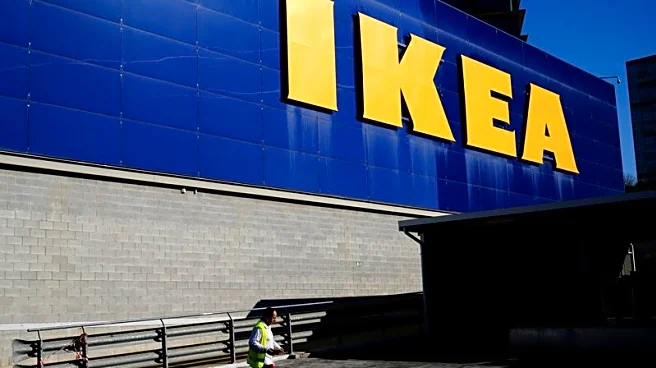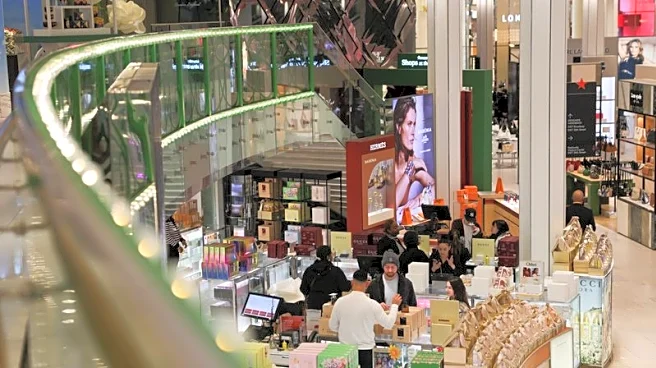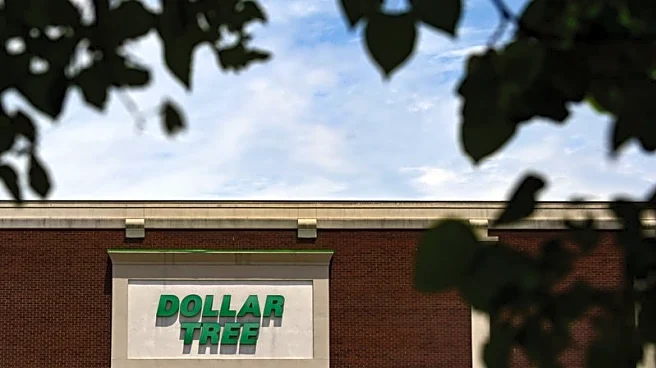What's Happening?
Retail sales in September showed mixed results, with core retail sales excluding restaurants, autos, and fuel rising over 5.7% year-over-year, according to the National Retail Federation. The report, released on October 9, highlights growth in various
categories such as sporting goods, clothing, and general merchandise. However, the U.S. Commerce Department's official report was delayed due to a government shutdown. Other reports, including one from the Bank of America Institute, indicate a 2% increase in total credit and debit card spending per household, driven mainly by services and gasoline. Despite these gains, inflation appears to be influencing the growth, as unit sales have declined across all retail segments.
Why It's Important?
The rise in retail sales is significant as it suggests consumer spending remains robust heading into the holiday season, despite inflationary pressures. The National Retail Federation's findings indicate healthy year-over-year growth, which could signal economic resilience. However, the impact of inflation is evident, with consumers reportedly reducing the quantity of products purchased while spending the same overall amount. This trend, described as 'Invisible Inflation,' highlights the challenges faced by lower-income households, whose spending reflects softer wage gains compared to middle- and higher-income households benefiting from stronger wage growth and wealth effects. The disparity in spending power could have long-term implications for economic inequality.
What's Next?
The delayed release of the U.S. Commerce Department's retail sales report leaves uncertainty in the market, with stakeholders awaiting official data to confirm trends. Retailers and policymakers will likely monitor consumer behavior closely as the holiday season approaches, adjusting strategies to address inflationary impacts. The National Retail Federation may continue to provide updates, offering insights into consumer spending patterns and economic conditions. Additionally, businesses may need to adapt pricing and inventory strategies to align with changing consumer demand and purchasing power.
Beyond the Headlines
The concept of 'Invisible Inflation' raises ethical and economic questions about consumer transparency and the real impact of inflation on purchasing power. As consumers adjust their buying habits, businesses may face pressure to maintain sales volumes without compromising on price. This situation could lead to shifts in marketing strategies and product offerings, emphasizing value and affordability. Furthermore, the wealth gap highlighted by spending patterns may prompt discussions on wage policies and economic support measures to address inequality.
